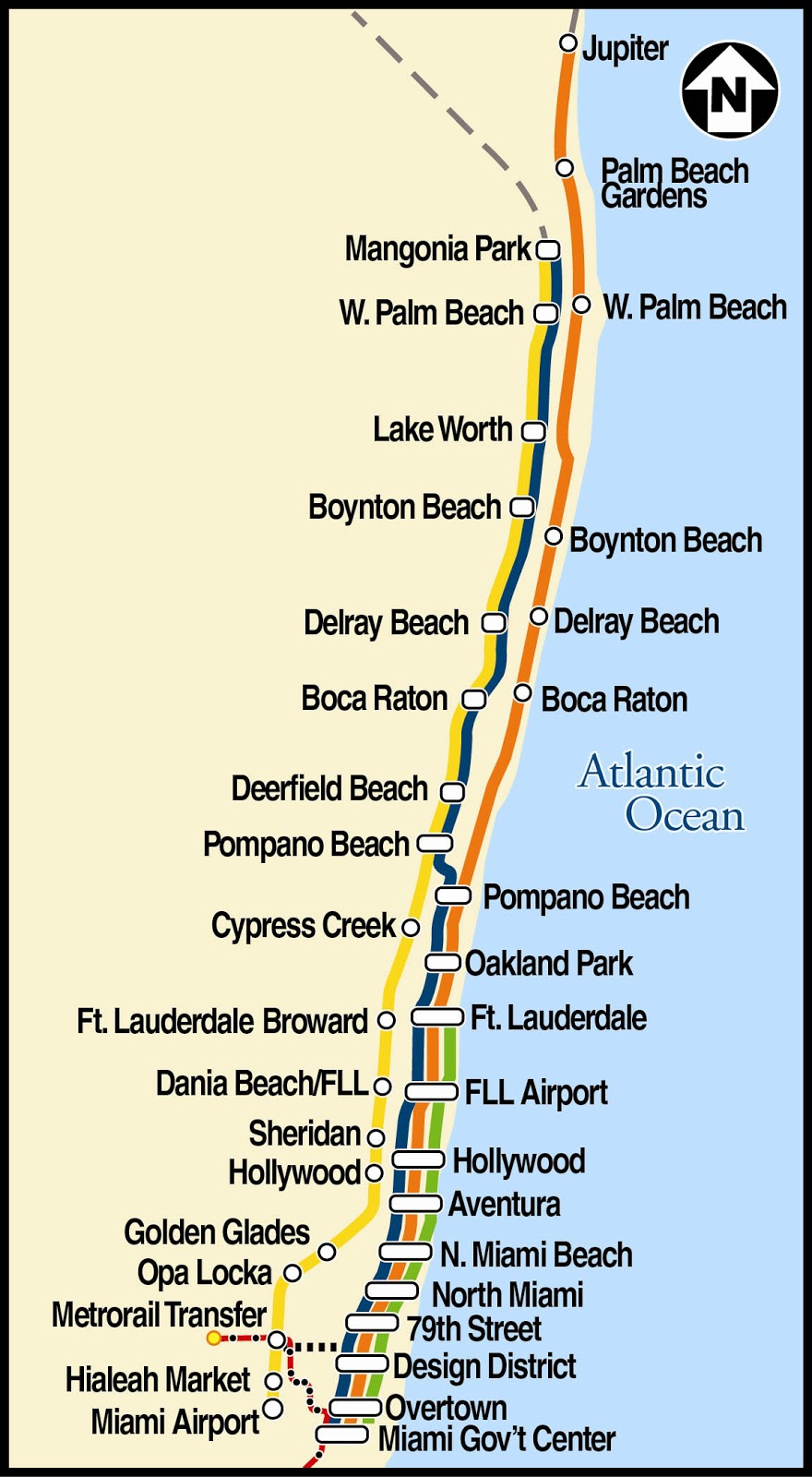For commuters and travelers in South Florida, the Tri Rail schedule is a vital resource that ensures smooth and efficient transportation. Whether you're heading to work, catching a flight, or exploring the bustling cities of Miami, Fort Lauderdale, and West Palm Beach, Tri Rail offers a dependable and eco-friendly way to get around. With its extensive network and precise scheduling, it has become a cornerstone of public transportation in the region.
Tri Rail is not just about transportation—it's about convenience, affordability, and sustainability. Covering major hubs and providing connections to buses, airports, and other transit systems, Tri Rail has positioned itself as an essential part of South Florida's transit ecosystem. However, understanding the Tri Rail schedule can sometimes seem overwhelming, especially for new riders or those unfamiliar with the system. That’s where this guide comes into play.
In this article, we'll dive into everything you need to know about the Tri Rail schedule, from its timetable and routes to tips for first-time riders. By the end of this guide, you'll not only be well-acquainted with the Tri Rail system but also feel confident planning your trips efficiently. So, let’s break it all down and make your commuting experience as seamless as possible!
Table of Contents
- What is Tri Rail?
- How Does the Tri Rail Schedule Work?
- Why is Tri Rail Important for South Florida?
- How to Read the Tri Rail Schedule?
- Tri Rail Stations and Routes
- What are the Differences Between Weekday and Weekend Schedules?
- Tips for First-Time Tri Rail Riders
- Peak Hours vs. Off-Peak Hours on Tri Rail
- How Does Tri Rail Connect to Airports?
- Fares and Ticket Options for Tri Rail
- How Can the Mobile App and Online Tools Help?
- What to Do When There are Delays or Service Updates?
- Tri Rail's Contribution to Eco-Friendly Commuting
- Frequently Asked Questions (FAQs)
- Conclusion
What is Tri Rail?
Tri Rail is a commuter rail system that serves South Florida, connecting Miami, Fort Lauderdale, and West Palm Beach through a 72-mile corridor. Established in 1989, the system initially aimed to alleviate traffic congestion during the construction of Interstate 95. Over the years, it has grown to become a reliable transit option for locals and visitors alike.
The service operates under the South Florida Regional Transportation Authority (SFRTA) and features both diesel-electric locomotives and bi-level passenger cars. With a focus on punctuality, affordability, and environmental sustainability, Tri Rail has become an integral part of the region's public transportation network.
Key Features of Tri Rail
- Operates 7 days a week, including holidays.
- Serves 18 stations across Miami-Dade, Broward, and Palm Beach counties.
- Provides connections to major airports, including Miami International Airport (MIA), Fort Lauderdale-Hollywood International Airport (FLL), and Palm Beach International Airport (PBI).
- Offers a range of ticketing options, including daily, monthly, and discounted fares for seniors and students.
Personal Details and System Information
| Feature | Details |
|---|---|
| Established | 1989 |
| Operator | South Florida Regional Transportation Authority (SFRTA) |
| Total Route Length | 72 miles |
| Total Stations | 18 |
| Service Days | 7 days a week |
How Does the Tri Rail Schedule Work?
The Tri Rail schedule is designed to cater to a wide range of commuters, from daily office-goers to occasional travelers. The schedule consists of weekday and weekend timetables, each tailored to meet the unique demands of commuters during those days. The trains operate at regular intervals, ensuring minimal wait times and efficient travel.
Weekday Schedule
On weekdays, the service frequency is higher during peak hours to accommodate the influx of office commuters. Trains typically run every 20-30 minutes during peak hours and every hour during off-peak times. The first train usually departs around 4:00 AM, and the last train wraps up around midnight.
Weekend Schedule
On weekends and holidays, the frequency is slightly reduced, with trains running every hour or so. However, the service still ensures timely connections to major hubs, including airports and bus terminals.
Special Services
Tri Rail often provides special schedules during events or emergencies, such as hurricane evacuations or major sports games. It's always a good idea to check the official website or mobile app for real-time updates.
Why is Tri Rail Important for South Florida?
Tri Rail plays a critical role in South Florida's transportation landscape. Here are some key reasons why:
- Reduces Traffic Congestion: By offering an efficient alternative to driving, Tri Rail helps reduce the number of cars on the road.
- Eco-Friendly Transportation: The system promotes sustainability by lowering carbon emissions.
- Economic Benefits: Tri Rail supports local economies by providing easy access to business hubs and tourist attractions.
- Accessibility: It connects underserved communities to essential services and job opportunities.
How to Read the Tri Rail Schedule?
Understanding the Tri Rail schedule is straightforward once you know the basics. Here’s how to make sense of it:
Key Components of the Schedule
- Train Numbers: Each train is assigned a unique number for easy identification.
- Departure and Arrival Times: Clearly listed for each station along the route.
- Peak vs. Off-Peak: Indicates whether the train operates during high-demand hours or not.
Tips for Reading the Schedule
- Identify your starting station and destination.
- Look for the corresponding train numbers and times.
- Note any special symbols or footnotes indicating delays or service changes.
For added convenience, you can also use the Tri Rail mobile app or website to plan your journey and receive real-time updates.
Article Recommendations
- Mitch Mcconnells 911 Victim Bill Key Details Impact
- Sleek And Sophisticated The Ultimate Low Taper Fade Guide
- Lavell Crawford Comedians Life Legacy And Current Status Unveiled

